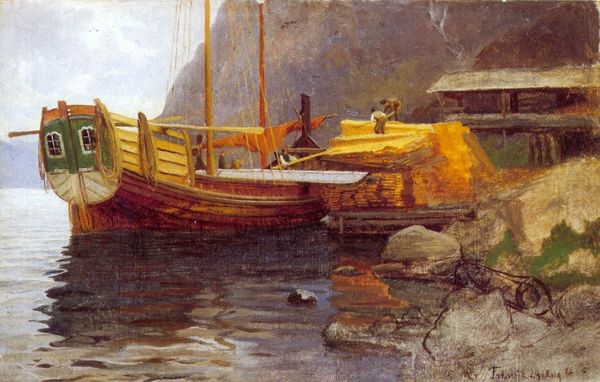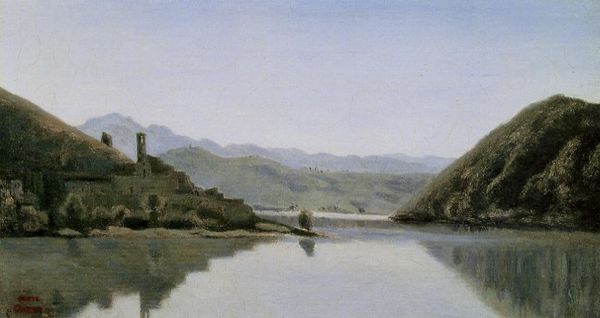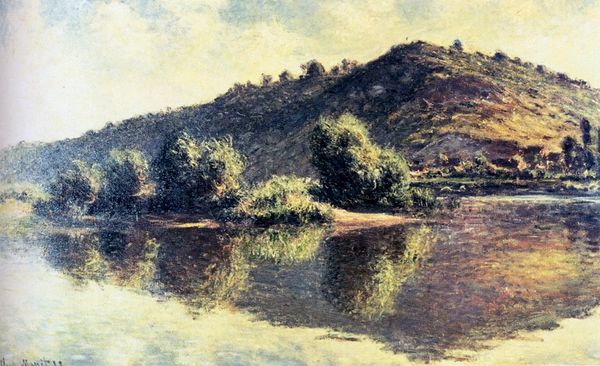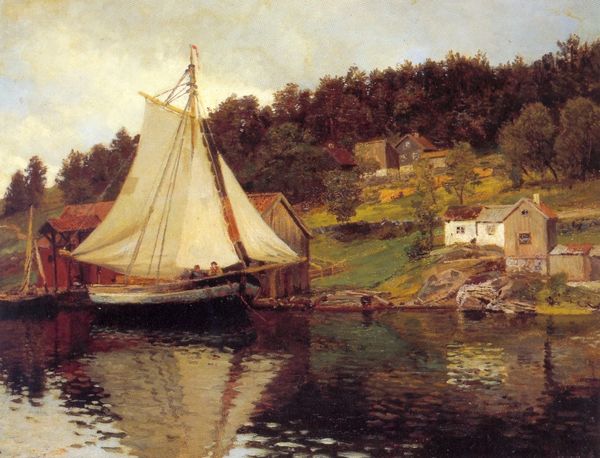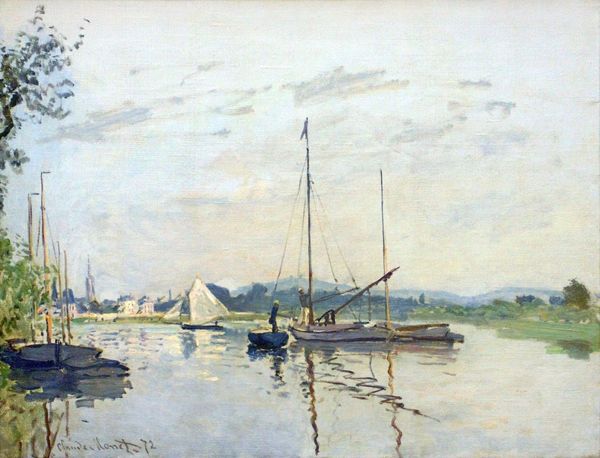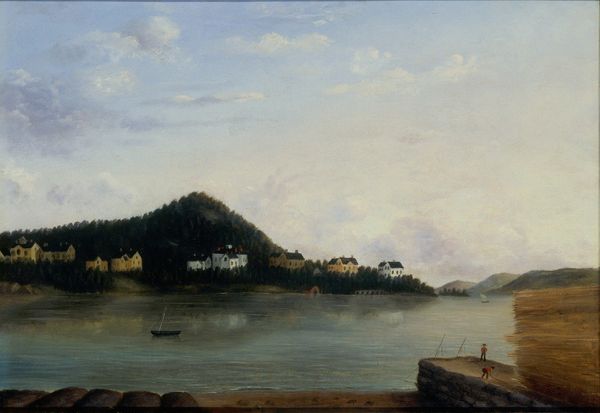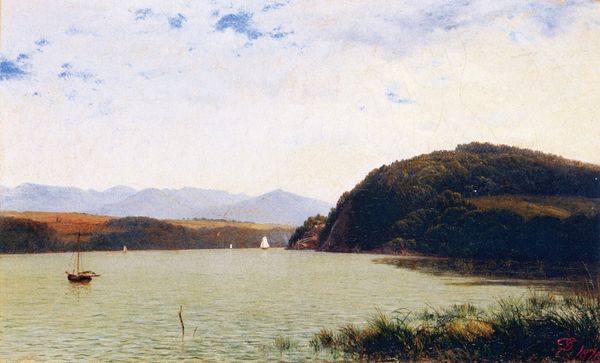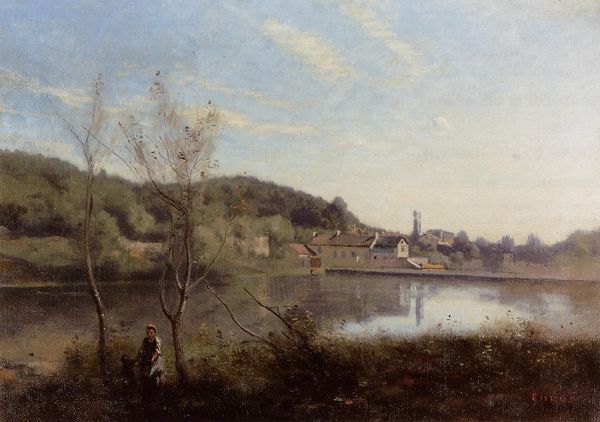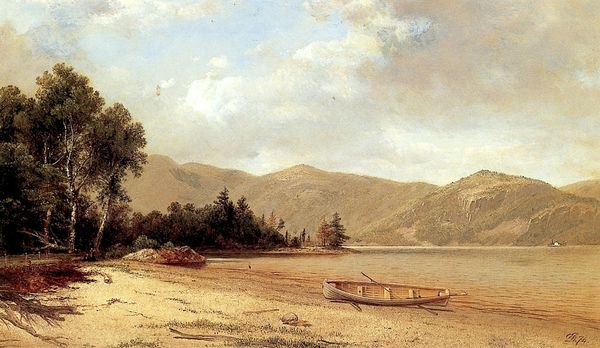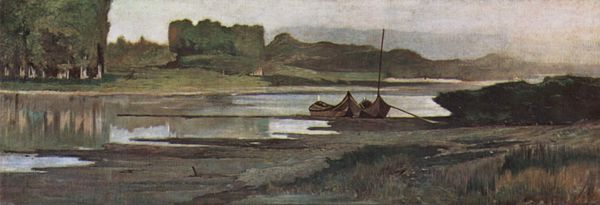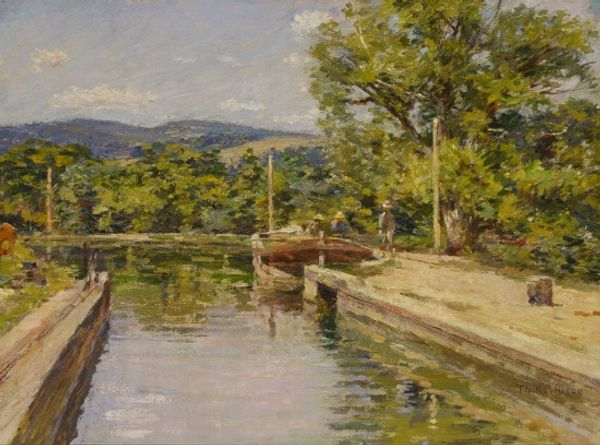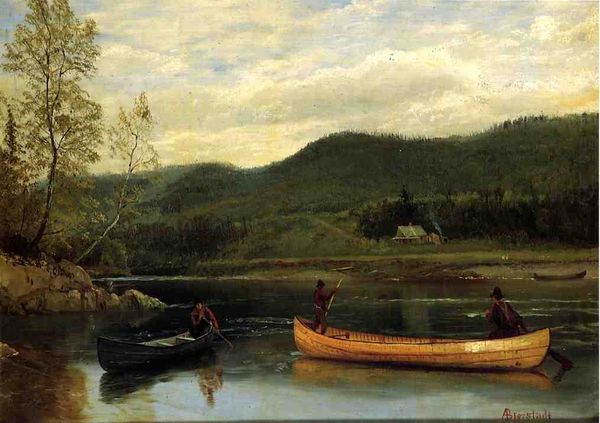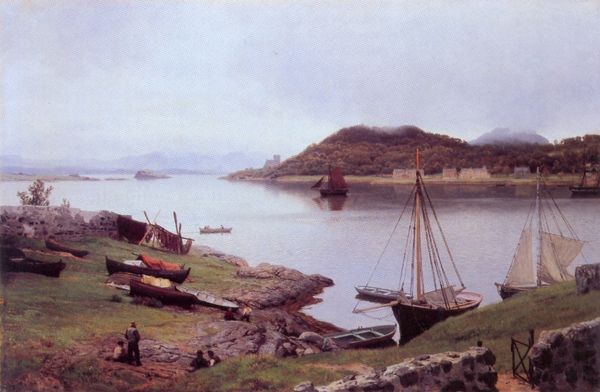
Copyright: Public domain
Curator: Tom Roberts' "Ulverstone," painted in 1899, presents us with a tranquil coastal scene rendered in oil. What are your first thoughts? Editor: The prevailing mood is one of idyllic quietude; a hazy stillness permeates everything. A large sailboat dominates the view, while a figure ascends its mast, seemingly tiny against the backdrop of hazy, blue mountains. It all feels very self-contained, reflective almost. Curator: It’s interesting how you pinpoint the quietude. The visible brushstrokes are quite loose, evoking an almost dreamlike quality, but one must also consider how Roberts has captured the relationship between labour and leisure here. The maritime infrastructure supports resource-gathering in the immediate region. The boat is right there, at the center! Editor: Absolutely, the symbology is undeniable. Boats represent journeys, exploration, the bridging of divides. Even the man scaling the mast; it's reminiscent of Icarus, pushing boundaries. Notice too how the presence of cows, juxtaposed with industrial infrastructure suggests a symbolic contrast between old and new, perhaps hinting at changes on the horizon for Ulverstone itself. Curator: I can definitely get behind your reading of those layered contrasts and tensions, given the social and cultural context. Ulverstone, then and now, is a productive, resourceful area whose products are consumed well beyond its locale. How does Roberts use his materials to tell a local, lived, story of industriousness? How might those elements—boats, livestock, labour, even a bridge-- facilitate or challenge this economy? Editor: True! Roberts is so keen to highlight these visual reminders of interconnectedness! But that style is fascinating too. While labelled ‘Impressionist,’ his work suggests more realism. Perhaps that means the deeper symbolism becomes that much more resonant with viewers over time? Does that make sense in light of your reading? Curator: I agree with you regarding his style. We're seeing something beyond mere impressionism; we witness material and lived experience in its composition and imagery. Considering the means of production--oil on canvas, readily available and a reflection of contemporary production -- one can certainly appreciate that, yes, a quiet form of symbolism resonates beyond its moment! Editor: It makes you think about the layers within a seemingly simple landscape painting! Curator: Indeed, a look at landscape, labor, and symbol combined in a most thoughtful manner.
Comments
No comments
Be the first to comment and join the conversation on the ultimate creative platform.
